Nasarpur Rural infrastructure
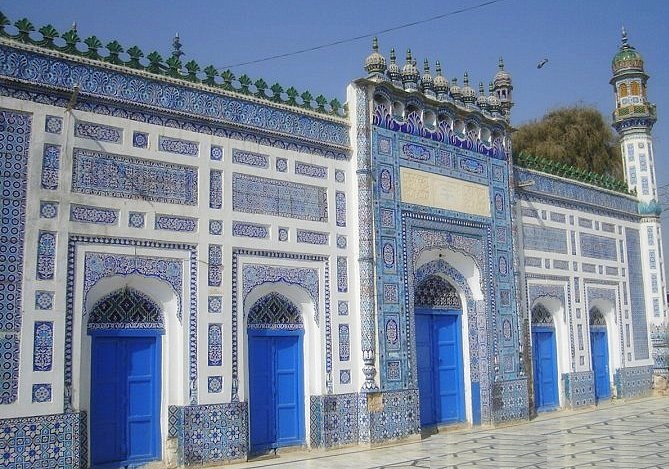 Nasarpur ~ The city, formerly
commanding the Indus river trade routes linking Hind and Sindh, It was the major
part of Lower Sindh during the ruling period of Soomro Tribe years ago. It is easily
one of the most overlooked cities in the Sindh, as it is stunningly beautiful, green
and packed full of historic artifacts and monuments. Nasarpur ~ The city, formerly
commanding the Indus river trade routes linking Hind and Sindh, It was the major
part of Lower Sindh during the ruling period of Soomro Tribe years ago. It is easily
one of the most overlooked cities in the Sindh, as it is stunningly beautiful, green
and packed full of historic artifacts and monuments.
Sheikh Baeed (BAYZEED) Mausoleum: This mausoleum (tomb) is located
on OderoLal road about a distance of 1.5 km from city. It is one of the oldest mausoleums
construct of solid bricks and mud. This mausoleums was located at the middle of
city in ancient times.
Mirza Shah Hasan Argoon (Mud Fort) :
 This Fort was built with mud during the era of Mirza Shah Hasan Argoon. In recent
days, the surroundings of fort is covered by cultivation lands and it seems that
existence of fort will be vanish soon.
According to other historical articals, this place is called Pir Menei Je Hawely.
This Fort was built with mud during the era of Mirza Shah Hasan Argoon. In recent
days, the surroundings of fort is covered by cultivation lands and it seems that
existence of fort will be vanish soon.
According to other historical articals, this place is called Pir Menei Je Hawely.
Jamia Masjid (SHAH JAHAN MASJID):
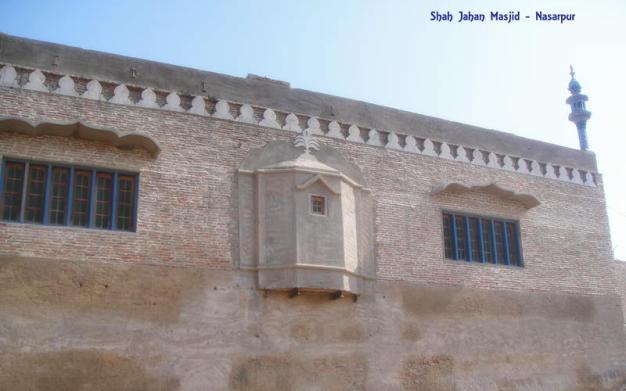 This Masjid is associated with the name of Naseer ( a leading personality),
during era of Feroz Shah Tukhluk. Masjid was located on west bank of Indus river
and was built with solid square bricks and mud. In recent past this masjid has renovated
and open for public to perform Namaz .
This Masjid is associated with the name of Naseer ( a leading personality),
during era of Feroz Shah Tukhluk. Masjid was located on west bank of Indus river
and was built with solid square bricks and mud. In recent past this masjid has renovated
and open for public to perform Namaz .
QRAQARI MASJID:
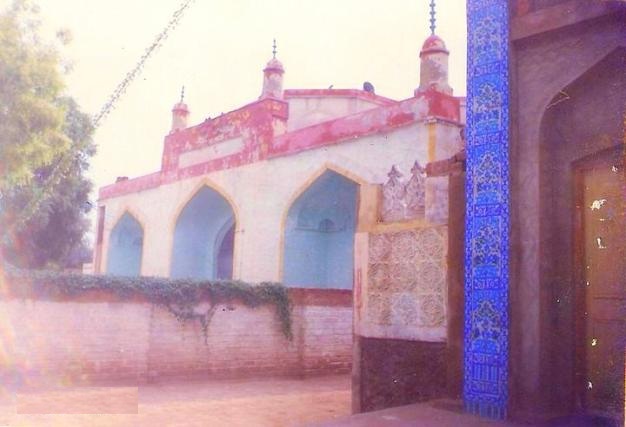 This historical masjid was built in era of great Mughal king Akbar. Masjid was built using bricks with clay and had three pillars and dome shape doors. The design of masjid is a reflection of Mughal art. In recent past, this masjid have been rebuild and open to offer pray.
This historical masjid was built in era of great Mughal king Akbar. Masjid was built using bricks with clay and had three pillars and dome shape doors. The design of masjid is a reflection of Mughal art. In recent past, this masjid have been rebuild and open to offer pray.
LAL KA MAQBRA (Mandar):
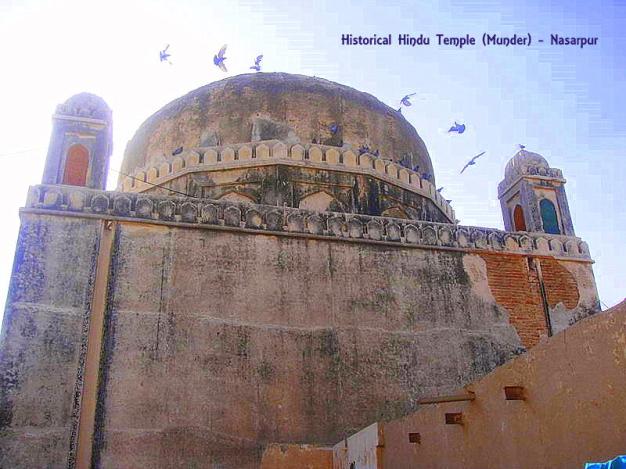 The tomb of Sheikh Tahir Amar lal (real name was Mangla son of Ratan) was built near to historical Shah Jahan masjid and bank of river Indus. Sheikh Tahir is also known as Zinda Peer according to Hindu believe. This tomb was built on his birth place in Nasarpur.
The tomb of Sheikh Tahir Amar lal (real name was Mangla son of Ratan) was built near to historical Shah Jahan masjid and bank of river Indus. Sheikh Tahir is also known as Zinda Peer according to Hindu believe. This tomb was built on his birth place in Nasarpur.
IBRAHIM SHAH CHOKUNDI: The tomb of Ibrahim Shah situated in ward no.5 and ancient Shahi Bazar Nasarpur. The great saint and poet of Sindh Shah Abdul Latif Bhittai reside in this tomb during His visit to Nasarpur along His father.
MASJID ARBAB:
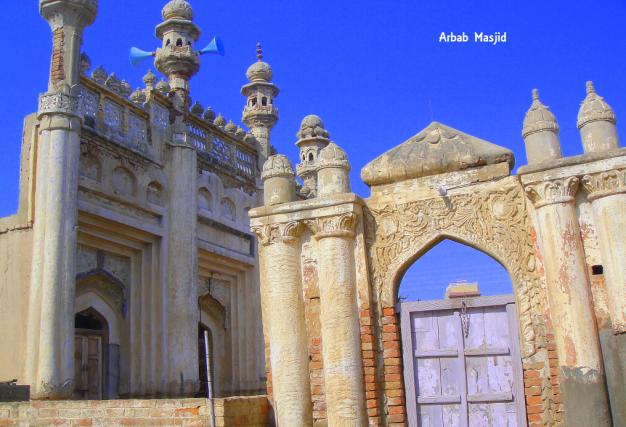 There are different view about this historical masjid. The design and structure of this masjid is a mirror of Mughal art. This masjid was constructed using strong stones with calcium carbonate (Clay) and have four pillars and three dome shape doors. The art work and design still emerged on doors as an evidence of historical importance of this masjid.
There are different view about this historical masjid. The design and structure of this masjid is a mirror of Mughal art. This masjid was constructed using strong stones with calcium carbonate (Clay) and have four pillars and three dome shape doors. The art work and design still emerged on doors as an evidence of historical importance of this masjid.
HAZRAT MISRI SHAH IMAM:
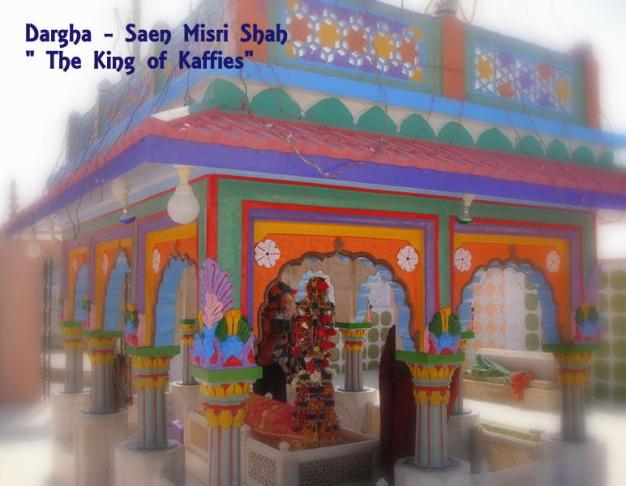 born in 1828 A.D in Nasarpur. His father name was Syed Buland Shah. Shah Imam was came from Syed Hashim Shah family (7th generation). He has accomplished his basic Arabic, Sindhi and Persian education in Nasarpur and afterward achieved Islamic education. Shah Imam is famous due to his Kafi writing and He is also known as king of Kafis. He died in Nasarpur and buried besides his Murshid Kamil Syed Shah Muhammad Jilani. His annual Urs (festival) is celebrated on 6,7 and 8 safar (Islamic calendar) with great respect and charm in Nasarpur. This festival is a compound of folk dance, entertainments, malarka, horse race and religious gatherings. Shah Imam was died on 1895 A.D.
born in 1828 A.D in Nasarpur. His father name was Syed Buland Shah. Shah Imam was came from Syed Hashim Shah family (7th generation). He has accomplished his basic Arabic, Sindhi and Persian education in Nasarpur and afterward achieved Islamic education. Shah Imam is famous due to his Kafi writing and He is also known as king of Kafis. He died in Nasarpur and buried besides his Murshid Kamil Syed Shah Muhammad Jilani. His annual Urs (festival) is celebrated on 6,7 and 8 safar (Islamic calendar) with great respect and charm in Nasarpur. This festival is a compound of folk dance, entertainments, malarka, horse race and religious gatherings. Shah Imam was died on 1895 A.D.
SHEIKH UL SIND MOLANA ABDUL HAQ RABBANI:
The great personality of Nasarpur, Molana Abdul Haq Rabbani (real name: Muhammad Wariyal) who was also rewarded with the title of Sheikh ul Sindh was born in 1910 A.D in a poor family of Muhammad Ramzan of Nasarpur. Molana sahib completed his earlier education from Hafiz Khuda Bux Qazi and arabic, persian from molana Taj Muhammad Qazi.
He achieved higher level of education and wisdom from great scholars of his time including, Molana Muhammad Ibrahim, Molana Husain Madni, Molana Shabir Ahmad, Molana Aizaz Ali and Molana Ubaidula Sindi. He established a madersa named as madersa Mazhar ul haq in Nasarpur and a high school in Mirpur Khas. He was the first president of Jamiat-ul-ma al hind branch office Nasarpur opened in 1937. He became the member of Pakistan People Party PPP in 1968 and also elected the head of Jamiat-ul-ma Sindh in 1943 A.D. Molana sahib has taken significant efforts and was founder of Risala Alfaroque newspaper and performed a significant role in One-Unit-Tehreek (Revolution) which caused a lot of troubles and imprisonment. He died in December 19, 1983 A.D and buried in neighborhood graveyard of Shah Ahmed Gori (Jiye Shah) in Nasarpur.
(Modified on Feb26,2011 by: Khadim Ghirano Nasarpur)
|

